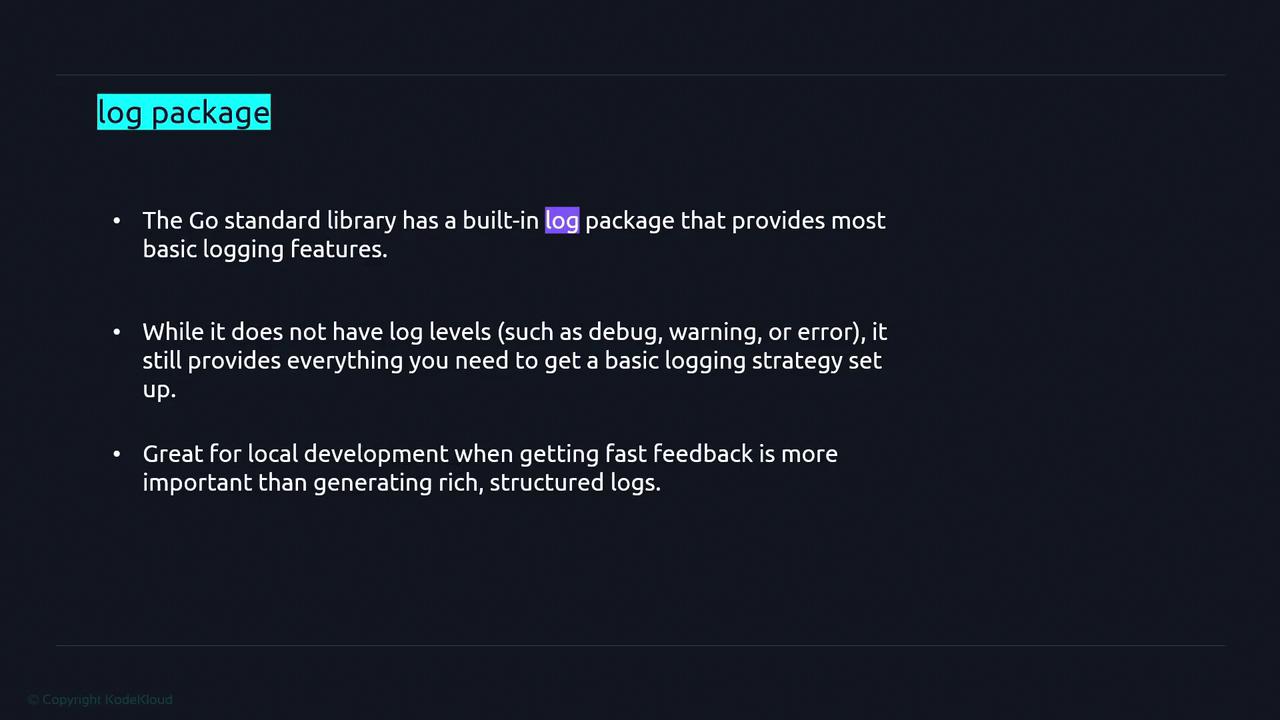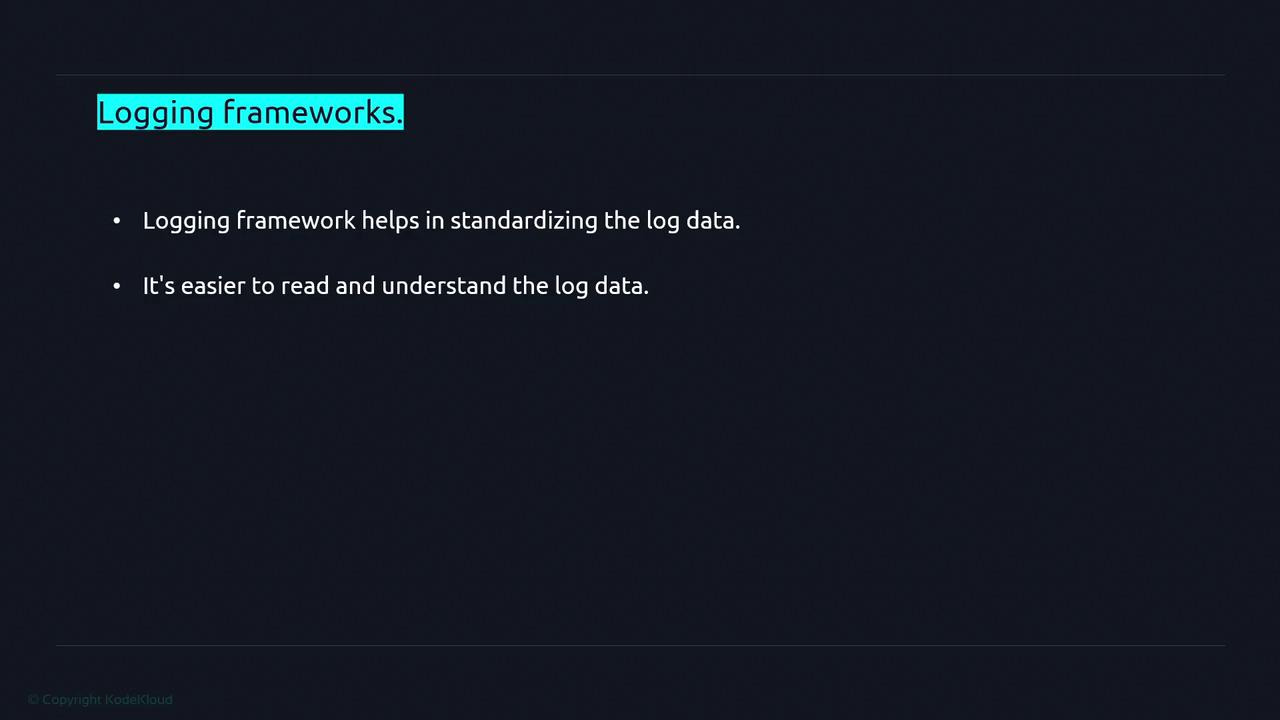Advanced Golang
Core packages
Logging
Golang offers built-in logging capabilities along with support for third-party frameworks, allowing developers to implement robust logging solutions efficiently. In this article, we review the built-in log package and then explore a popular third-party logging framework: Logrus.
Why Logging Matters
Logging is a critical aspect of application development and maintenance. It helps to:
- Identify and debug issues.
- Uncover performance bottlenecks.
- Conduct post-mortem analyses after outages or security incidents.
What Should Be Logged?
At a minimum, every log entry should include:
- A timestamp indicating when the event took place.
- The log level (such as debug, error, or info).
- Contextual information to facilitate issue diagnosis.
The Built-in Log Package
The Go standard library includes a basic log package. While it does not offer multiple log levels (like debug, warn, or error), it provides the essentials needed for a simple logging strategy—especially useful during local development when quick feedback is preferred over complex, structured logging.

For advanced logging requirements, consider adopting a framework that standardizes log data. This approach simplifies reading, aggregating, and analyzing logs, especially when consolidating data from multiple sources.

Two popular logging frameworks used in Golang are GLog and Logrus. This article focuses on Logrus, a well-maintained package used in projects like Docker.
Using the Built-in Log Package
Below is a basic example that demonstrates how to use Go's built-in log package to produce a simple log statement:
package main
import "log"
func main() {
log.Println("Hello world")
}
When you execute this program with:
go run main.go
You will receive an output similar to:
2022/11/27 21:54:11 Hello world
Note
For quick local testing and simple applications, the built-in log package is often sufficient. However, for more complex applications, a dedicated logging framework may be more appropriate.
Logging to a File
To store log messages in a file, you can leverage the OS package to open or create a file and then set it as the logging output destination. The file pointer returned by os.OpenFile satisfies the io.Writer interface, making it a suitable target for log output.
Below is a complete example demonstrating how to log to a file:
package main
import (
"fmt"
"log"
"os"
)
func main() {
file, err := os.OpenFile("/Users/priyanka/app.log", os.O_APPEND|os.O_CREATE|os.O_WRONLY, 0600)
if err != nil {
fmt.Println(err)
return
}
log.SetOutput(file)
log.Println("Hello world")
}
When executed, this program appends a log entry, complete with the current date, time, and message, to the specified file.
Using Logrus
Logrus is a flexible logging framework that extends the functionality of the built-in log package by supporting multiple log levels and additional features. Installing Logrus is straightforward. Use the following command to download the package:
go get github.com/sirupsen/logrus
Once installed, here's an example that logs a message into a file using Logrus:
package main
import (
"fmt"
"os"
"github.com/sirupsen/logrus"
)
func main() {
file, err := os.OpenFile("/Users/priyanka/app.log", os.O_APPEND|os.O_CREATE|os.O_WRONLY, 0644)
if err != nil {
fmt.Println(err)
return
}
logrus.SetOutput(file)
logrus.Info("Hello world")
}
Logrus supports multiple log levels, including:
- Trace
- Debug
- Info
- Warn
- Error
- Fatal
- Panic
The severity increases from Trace to Panic. For instance, using logrus.Fatal("...") prints a fatal message and terminates the program, while logrus.Panic("...") logs the message and then panics. To log warning messages, use logrus.Warn("...").
Below is an example showing how to configure Logrus to capture debug and trace logs:
package main
import "github.com/sirupsen/logrus"
func main() {
// Set the logging level to DebugLevel to ensure debug messages are captured.
logrus.SetLevel(logrus.DebugLevel)
logrus.Debug("This is a debug message")
// To log a trace message, ensure that the level is set appropriately.
logrus.Trace("This is a trace message")
}
Warning
Remember that while the built-in log package is ideal for quick prototyping and trivial applications, production environments benefit greatly from the enhanced flexibility and features provided by frameworks such as Logrus.
Watch Video
Watch video content